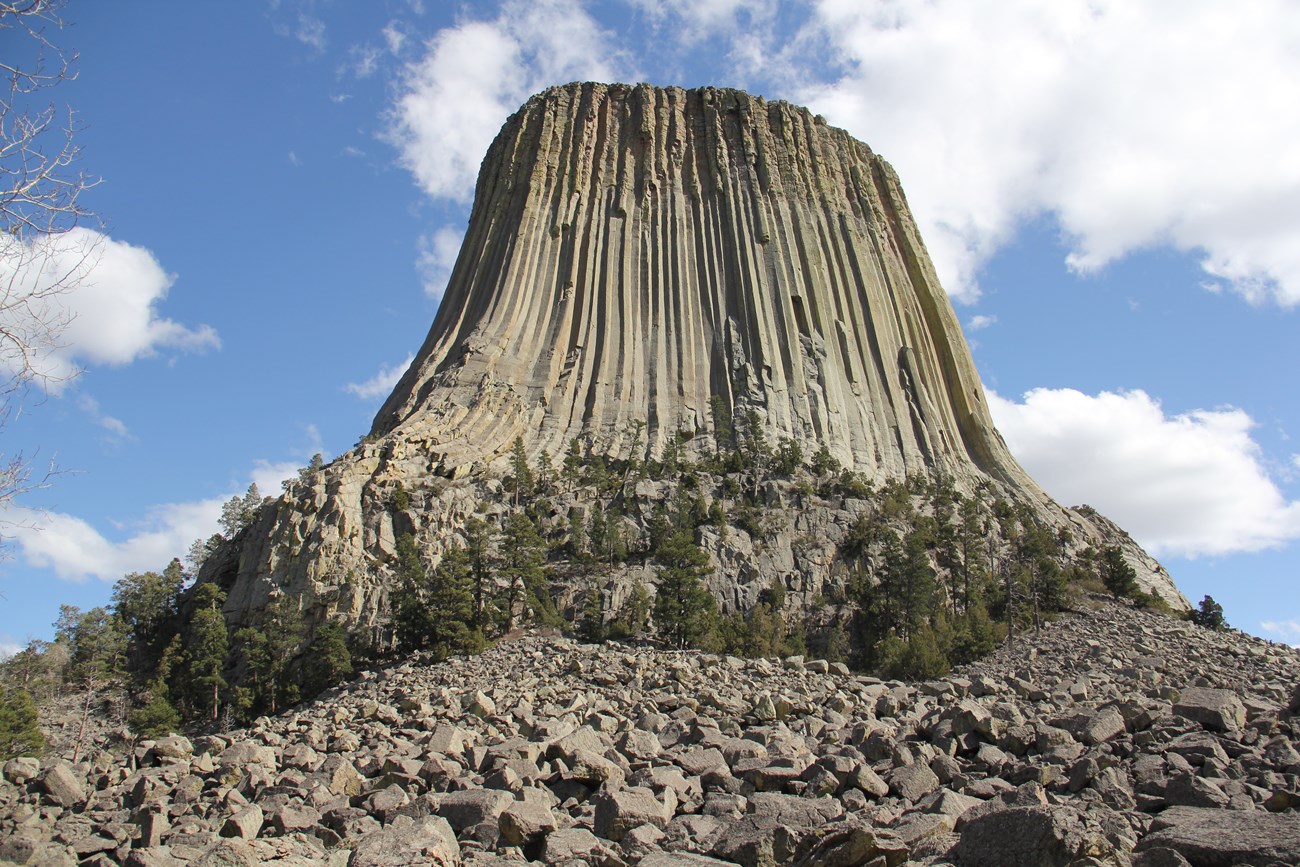Part of a series of articles titled Devils Tower National Monument Virtual Junior Ranger Activities .
Article
Backyard Geology

NPS photo
It’s time to channel your inner rock star! Devils Tower is made up of a very unique type of rock called phonolite porphyry (PHONE-o-lite por-FY-ree). This type of igneous rock formed when magma (molten rock) cooled very slowly underground. Explore the rocks around your home as a junior geologist, or scientist who studies the earth!
Find a rock and observe it (study it carefully). Use the Field Notes below to guide your observations and record your notes in a journal or sheet of paper. You can print the Field Notes sheet to use.
Put your rock on display for a day and share what you’ve learned with your family! When you’re done, remember to put the rock back where you found it. Junior Rangers practice Leave No Trace ethics by not taking anything from its home in nature.
Field Notes
Find a rock in your backyard, and examine it closely using your five (5) senses.
Sight
What color is your rock?
Do you see any of the following? If so, describe them!
- Crystals:
- Fossils:
- Dark or light bands:
- Pieces of other rocks:
Touch
What does your rock feel like?
- Does it feel smooth or jagged?
- Does it feel chunky?
- Does it feel like sandpaper?
- Does it feel porous (holey)?
Sound
Tap your rock with your fingernail. What does it sound like?
Tap your rock with another rock. What does it sound like?
Smell
What does your rock smell like?
Taste
Ask an adult for permission before licking your rock!
Sometimes geologists lick rocks to learn more about the texture or composition of the rocks they study.
Lick your rock. What does it taste like?
- Is it salty?
- Do flakes come off on your tongue?
Bonus – Rock Type
| Rock Type | How It Forms | Examples |
|---|---|---|
|
Sedimentary |
Sediments get packed together (sand, other bits of rock, organic matter, etc.) |
Sandstone |
|
Igneous |
Cooling of molten rock: magma (underground) or lava (above ground) |
Granite |
|
Metamorphic |
Other rocks experience extreme temperature and/or pressure conditions |
Marble |
How do you think your rock formed?
What kind of rock do you think it is?
Great job! You’re a rock star!
Last updated: July 23, 2024
